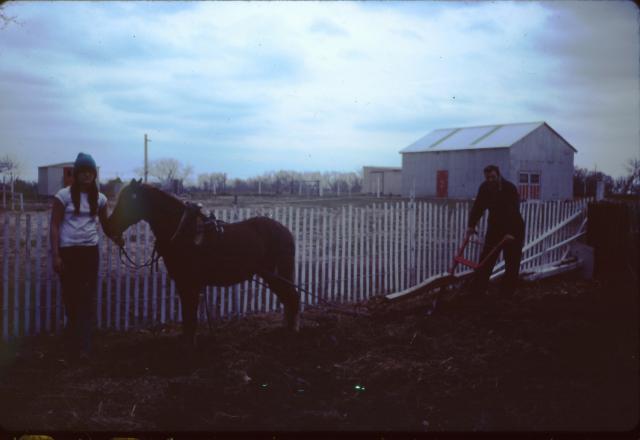with all due respect, I have actually worked with a team plowing. Since you are a horsewoman I am sure you know the difference in harness alone between real workhorses and buggy horses. I should have probably stuck to the difference in harness so to avoid discussion of favorite breeds. To tell the truth I always associate Mules as being the heavy pullers in AK, MO and other hilly parts of the midwest. In any event I should have been more specific about harness. It needs to be fitted to the horse or team and to the job it is going to be used for. My intent was that point not the size or breed of horse to be used.Dawn419 said:There's actually a riding-sized breed which you may not be familiar with, called a Missouri Fox Trotter, that is pretty popular and is excellent for riding as well as being a versatile "homestead" horse.~gd said:Remember that most of the old harness was made for draft horses which are much larger than modern Riding horses.
History of the Fox Trotter from the California Fox Trotter Association:
From the above link:The Missouri Fox Trotting horse was developed primarily from saddle horses and light harness horses that early settlers brought with them to the rugged hills of the Ozarks during the 19th century. These early settlers brought their finest saddle stock with them. These horses were depended upon for their sure-footedness in their mountainous region and their ability to do whatever was needed about the homestead, such as plowing, hauling logs and working cattle, while at the same time able to double as a stylish buggy horse or riding horse for the family. The easy gaited horses who left their genetic imprint on the Fox Trotting Horses of the Ozarks, were the American Saddle Horses of Kentucky, Walking Horses of Tennessee, Arabian, Morgan, Thoroughbreds, horses of the initial Spanish-Barb ancestry, plantation horses from the deep South and other light breeds. These breeds were combined to give the Fox Trotting Horse a smooth gait along with a pleasing appearance and disposition. Their bloodlines can be traced from early settlers who poured across the Mississippi River, into the Ozarks, from Arkansas, Illinois, Kentucky, Virginia and Tennessee.
Quarter Horses usually stand 14 to 16 hands high.The Missouri Fox Trotting horse comes in a variety of colors and stands between 14 to 16 hands in height, <snip>
So, it's not unreasonable that one can find old harnesses to fit a smaller "work" horse.
the harness for a Budweiser Clydesdale on a Missouri Fox Trotter would look like Mean Joe Green's jersey on the kid that gave him a Coke [been watching the great old Super Bowl ads on-line.] ~gd




